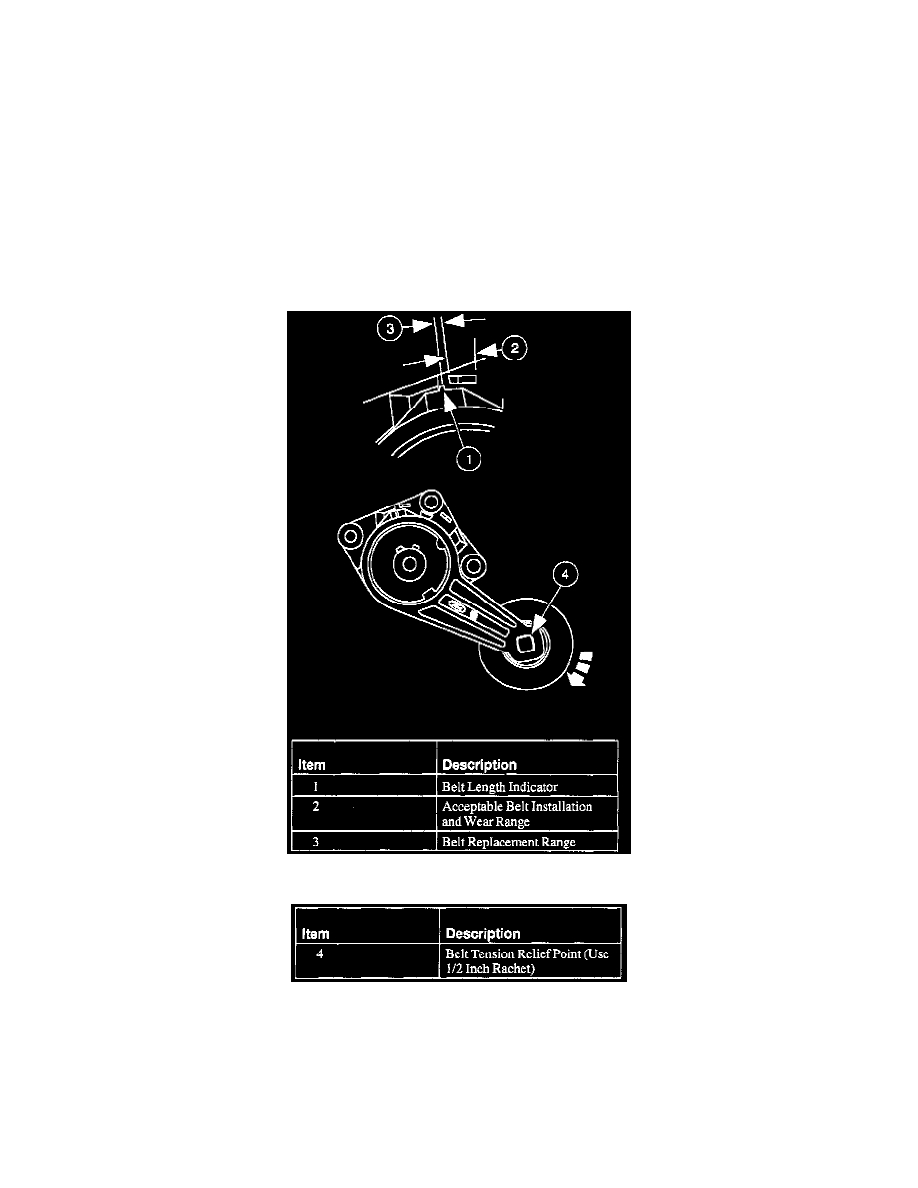Expedition 4WD V8-281 4.6L SOHC (1998)

With the engine running, check drive belt tracking. If the (A) edge of the drive belt rides beyond the edge of the pulleys, noise and premature wear may
occur. Make sure the (B) drive belt rides correctly on the pulley. If a drive belt tracking condition exists, proceed with the following:
Visually check the drive belt tensioner for damage, especially the mounting pad surface. If the drive belt tensioner is not installed correctly, the mounting
surface pad will be out of position. This will result in chirp and squeal noises.
^
With the engine running, visually observe the grooves in the pulleys (not the pulley flanges or the pulley forward faces) for excessive wobble.
Replace components as required.
^
Check all accessories, mounting brackets and the drive belt tensioner for any interference that would prevent the component from mounting
properly. Correct any interference condition and recheck the drive belt tracking.
^
Tighten all accessories, mounting brackets, and drive belt tensioner retaining hardware to specification. Recheck the drive belt tracking.
Drive Belt Noise/Flutter
NOTE: Tensioner is shown in free-state position against arm travel stops.
Part 1 Of 2
Part 2 Of 2
Drive belt chirp occurs due to pulley misalignment or excessive pulley runout. It can be the result of a damaged pulley or an improperly aligned
pulley.
To correct, determine the area where the noise comes from. Check each of the pulleys in that area with a straightedge to the crankshaft pulley, look
for accessory pulleys out of position in the fore/aft direction or at an angle to the straightedge.
Drive belt squeal is an intermittent noise that occurs when the drive belt slips on a pulley during certain conditions, such as: engine start up, rapid
